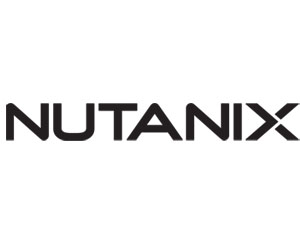Healthcare organizations face mounting pressure to adopt innovative approaches to enhance patient care and streamline operations. To address this, the adoption of unified platforms, including hybrid multicloud, is surging among healthcare organizations.
Healthcare technology leaders must balance priorities for security, platform flexibility and data mobility. One way to achieve this is with a platform architecture that integrates computing, storage, virtualization and networking into a single solution.
Simplifying data center management enables healthcare organizations to build and operate powerful private, hybrid and multicloud environments that are flexible and scalable.
Kurt Telep, healthcare field CTO for Nutanix , spoke with HealthTech about how healthcare organizations can use enterprise cloud platforms to achieve operational efficiencies, accelerate innovation and prepare for artificial intelligence adoption.
DISCOVER: Nutanix helps healthcare organizations find simplicity in cloud complexity.
HEALTHTECH: How are data management requirements changing for healthcare organizations?
TELEP: There’s a significant shift in how data is perceived and utilized. Initially siloed, data is now seen as invaluable, enhancing patient care and community health. Consequently, data management has evolved beyond mere storage to include anywhere accessibility for electronic health records, data mining and adoption of new applications for AI use-cases. This requires a high-performance platform for real-time access and analysis, as data has a gravitational pull, expanding in volume due to advanced devices and diagnostic modalities. Data proximity to patient care becomes crucial, as moving large data sets for cloud-based processing poses challenges. Optimizing data processing near its source is paramount.
HEALTHTECH: What are the primary drivers behind the increasing adoption of unified platforms in healthcare IT?
TELEP: Standardization, data replication, cost efficiency and risk reduction are key factors driving the adoption of a unified platform in healthcare IT. Simplification is achieved by using one platform across all endpoints, reducing the need for diverse skill sets among staff. A common infrastructure also facilitates seamless data replication, simplifying the movement of data between locations and environments. Economies of scale lead to cost benefits through streamlined licensing, hardware and training expenses. Moreover, standardization reduces overall risk by minimizing failure points in the solution, aligning with the risk-averse nature of healthcare organizations.
Click the banner below to learn how a modern data platform supports decision making.
HEALTHTECH: Why is the integration of computing, storage, virtualization and networking so crucial for effective data management?
TELEP: Nutanix offers a powerful solution by consolidating multiple platforms into one, streamlining management and enhancing scalability. In healthcare, where data decentralization is common across numerous locations, we enable centralization and simplify infrastructure. For instance, a large healthcare organization with multiple data centers can condense its hardware and software down to just a few Nutanix nodes, reducing complexity and operational burden.
Our platform also facilitates seamless disaster recovery by providing a consistent platform experience between on-premises and cloud environments. This eliminates the need for specialized cloud expertise, enabling healthcare organizations to transition to the cloud effortlessly. This unified approach ensures compatibility and efficiency across environments, making it an ideal solution for healthcare’s evolving needs.
READ MORE: Set up cloud transformations for success in healthcare.
HEALTHTECH: What role does security play in data management and why must this aspect be user-friendly?
TELEP: In healthcare, the inevitability of security breaches and government pressure to secure protected health information underscores the need for proactive and scalable security measures. Beyond that, tools must be user-friendly for common administrators to effectively manage daily. Nutanix addresses these challenges by offering simplicity and automation, ensuring that security policies are universally applied and that abnormal activities are detected through AI. This approach seamlessly scales from small dental offices to large healthcare organizations, catering to diverse security needs without overwhelming administrators. We offer a comprehensive suite of security solutions that cover unified storage, platform access and virtual machine security.
HEALTHTECH: How is AI changing requirements for healthcare data platforms, and what can Nutanix do to help incorporate AI into data management?
TELEP: AI in healthcare presents challenges and opportunities, as it aims to expedite patient care while simplifying processes for providers. In response, Nutanix offers two approaches: packaged AI products that integrate with existing systems and customized AI development. For healthcare organizations opting to develop their AI, Nutanix provides turnkey solutions like GPT-in-a-Box. This preconfigured stack streamlines AI infrastructure setup, allowing healthcare organizations to focus on model development without grappling with hardware and software complexities. With Nutanix’s solution, data remains on-premises, addressing concerns about data privacy and security. The simplicity and rapid deployment of Nutanix’s AI solutions enable healthcare organizations to leverage the technology effectively, enhancing patient care and operational efficiency.
HEALTHTECH: What’s the role of tech partners in helping healthcare organizations deploy IT solutions?
TELEP: Organizations can leverage our expertise to navigate complex technological landscapes, helping them avoid pitfalls and optimize outcomes. We can offer guidance based on our experiences with other deployments. This partnership ensures smoother transitions to new technologies — AI for example.
Additionally, technology partners facilitate the efficient use of existing assets for emerging workloads, enhancing cost-effectiveness. Our commitment to offering options empowers organizations to adapt to evolving needs, whether in hardware, cloud or hypervisor choices, fostering flexibility and mitigating risks associated with technology lock-in. We believe that by offering organizations a high degree of flexibility, we’re helping them remain agile, capitalize on emerging trends and make informed decisions for long-term success.
Brought to you by:














